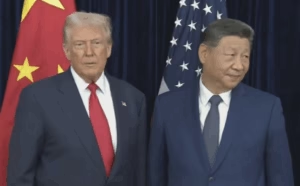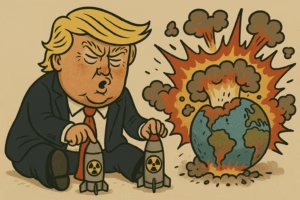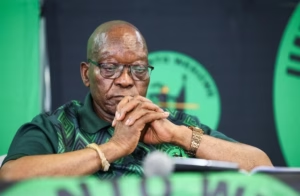The United States has unveiled a proposal that would see Taiwan relocate a substantial portion of its semiconductor production to American soil. The plan, however, has met with severe resistance in Taiwan, where industry experts, political voices and the public warn it could undermine the island’s economy and threaten its technological future.
Washington’s “50-50” Proposal
United States Secretary of Commerce Howard Lutnick confirmed in an interview that discussions have been held with Taiwan’s Democratic Progressive Party (DPP) leadership. He revealed that the Trump administration is pressing for a “50-50” arrangement in which half of Taiwan’s semiconductor output would be produced in the United States.
“95 percent of our chips are made 9,000 miles away,”
Lutnick said, adding that it was risky for America to remain so dependent on foreign supply chains. He further argued that China was not being
“shy” about threats to “take” Taiwan,
and insisted that boosting domestic chip capacity was now a matter of national security.
Widespread Criticism in Taiwan
The proposal was quickly met with fierce backlash in Taiwan. Local media outlets carried strong editorials warning that Washington’s plan was a pretext to exploit Taiwanese expertise while hollowing out the island’s own economy. The Taipei-based China Times reported that online commentators labelled the proposal “almost an outright robbery.”
Prominent academics and analysts also expressed concern. Liu Da-nien of the Chung-Hua Institution for Economic Research dismissed the idea as neither realistic nor fair. He pointed out that Taiwan Semiconductor Manufacturing Company (TSMC), the island’s largest chipmaker, had already committed to investing 165 billion United States dollars in Arizona, the company’s largest overseas investment to date.
Yet even before the new plants are fully operational, the shortage of skilled professionals in the United States has emerged as a serious obstacle.
“Under such circumstances, it is virtually impossible for the United States to boost its chip production capacity,”
Liu observed.
Questions of Fair Trade and Economic Security
Taiwanese business leaders stressed that semiconductors are the backbone of the island’s economy and warned that the balance of production capacity must remain sensible. Lai Cheng-i, honorary chairman of the Taiwan General Chamber of Commerce, criticised the American proposal, saying that transferring half of Taiwan’s semiconductor manufacturing overseas would contradict the principles of free trade.
He further warned of grave consequences if the plan went ahead.
“Should semiconductor production capacity or supply chain shift to the United States, Taiwan will likely lose 200,000 high-tech professionals and more than 1 million high-spending consumers,”
Lai said. Such an exodus, he added, would deliver a devastating blow to the island’s economy.
Darson Chiu, an adjunct professor at Tunghai University, argued that the United States frequently crafts economic policies to curtail countries or regions excelling in specific industries. In his view, the “50-50” proposal amounted to
“a sugar-coated form of blackmail that will harm both the island and TSMC.”
Concerns Over Political Alignment
Beyond economics, the issue has sparked debate over Taiwan’s political alignment with Washington. Some experts criticised the DPP authorities for their
“near-complete” pandering to the United States,
warning that the government risked sacrificing the island’s interests for American strategic goals.
Former TSMC engineer Tseng Hsien-ying noted that by fully complying with US demands, Taiwan could weaken its own ability to maintain control over critical supply chains.
“Peace and stability are the best industrial policies,”
Tseng stressed, urging the DPP leadership to seek policies that safeguard Taiwan’s technological base while reducing tensions with Beijing.
What Lies Ahead
The proposal has exposed a fault line between American strategic interests and Taiwanese economic realities. For the United States, reshoring chip production is framed as a security imperative. For Taiwan, however, the lifeblood of its economy and workforce is at stake.
At present, no consensus exists. The United States is seeking to reduce its reliance on a foreign supply chain located thousands of miles away, while Taiwan is fighting to preserve the industrial ecosystem it has built over decades. How the DPP authorities balance these pressures may determine not only the island’s economic security, but also its broader geopolitical future.
















